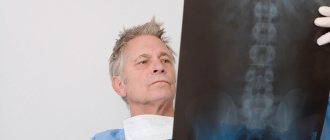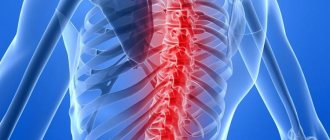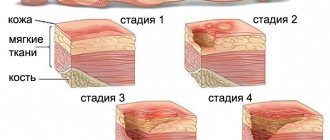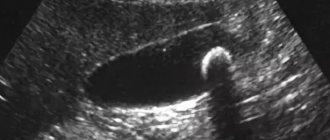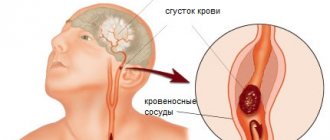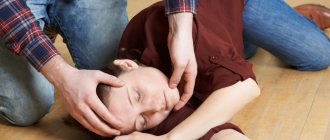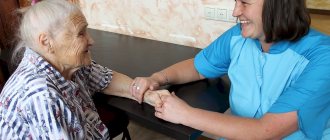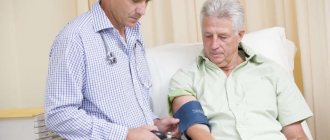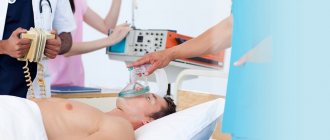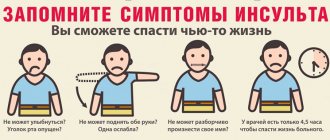A cerebral stroke is a dangerous neurological disease that can lead to negative consequences: loss of performance, inability to recover, and even death. This is why it is so important to find a reputable specialist who will organize stroke treatment. The disease is a sudden disruption of blood circulation in the brain, in which the death of nerve cells occurs.
Causes
Most often, the first stroke occurs and can manifest itself between the ages of 40-50 years - the older the person, the more likely the danger. Possible causes of cerebral stroke are certain risk factors and the presence of certain diseases:
- heart disease;
- excessive blood pressure;
- high cholesterol and obesity;
- alcohol and smoking abuse;
- diabetes;
- blood clotting disorder;
- aneurysms (formations) of cerebral vessels.
Rehabilitation treatment after stroke at the MART clinic
Our medical center conducts studies such as MRI, ultrasound, laboratory and functional diagnostics. Experienced therapists will perform manual diagnostics, and special rehabilitation systems can identify the condition of the muscular system.
Rehabilitation of patients who have suffered a stroke requires combined methods:
- Dieting. Bed rest in the first weeks after a stroke, then moderate physical activity. Avoiding bad habits and stressful situations.
- Physiotherapeutic procedures and reflexology to reduce pain and accelerate recovery processes. These methods help prevent muscle atrophy and improve the nutrition of soft tissues.
- Motor rehabilitation, including physical therapy exercises under the supervision of a physician-instructor, osteopathy and therapeutic massage. As a result, muscle tone will be restored, joints and spine will be strengthened, and the lost range of movements will return.
- Visiting a psychotherapist to treat depression and establish a positive attitude. If necessary, speech rehabilitation.
Sign up at the MART medical center in St. Petersburg (see map) by phone, or leave a request on the website.
Symptoms
Signs of a stroke most often appear late at night or early in the morning. It is necessary to call emergency assistance as soon as possible. Delay in dealing with stroke symptoms is prohibited, as it can lead to the most dire consequences. In order to quickly help a victim of a dangerous disease, it is worth knowing exactly what a stroke patient looks like:
- a sharp and very severe headache appears;
- facial expressions change, the face looks unnatural;
- muscle paralysis and numbness, inability to move the limbs are detected;
- severe speech impairment, inability to understand text and articulate;
- sudden deterioration of vision;
- the gait becomes uncertain and shaky, coordination of movements is impaired.
Which doctor treats the consequences of a stroke?
Rehabilitation treatment after a stroke is prescribed by a neurologist. He will trace all the changes that have occurred in the brain or spinal cord and determine the consequences of these changes.
For diagnosis, magnetic resonance imaging, cardiogram, ultrasound duplex scanning of arteries, and laboratory examinations can be performed.
The restoration of motor functions is usually carried out by a physiotherapist. If there are speech disorders, then the help of a speech therapist is necessary. Throughout the entire rehabilitation period, classes with a physical therapy doctor are necessary. In some cases, consultations with a psychologist or psychotherapist are required.
At the MART clinic on Vasilyevsky Island
- Experienced doctors (including those practicing in the USA and Europe)
- Prices affordable for everyone
- Expert level diagnostics (MRI, ultrasound, tests)
- Daily 8:00 — 22:00
Make an appointment
The influence of the localization of the lesion after a stroke on the human condition
Symptoms of a stroke depend on which part of the brain is affected and which artery fails to perform its function.
The brain receives its blood supply from two internal carotid and two vertebral arteries.
The internal carotid arteries supply blood to most of the hemispheres: the frontal, temporal and parietal lobes.
The vertebral arteries at the base of the brain stem merge into one, the basilar artery. The vertebral and basilar arteries supply blood to the brain stem and cerebellum, and the posterior cerebral arteries, which extend from the basilar artery, supply the occipital lobes of the brain.
Depending on the area of the blood supply of which artery the vascular accident occurred, stroke is divided into: stroke of the main trunk of the middle cerebral artery, superior branch, inferior branch of the middle artery, stroke of the anterior cerebral artery, etc.
Sometimes among patients you can hear the following terms: “cerebral vascular stroke”, “stroke of the right hemisphere of the brain”, “stroke of the left hemisphere of the brain”, “stroke of the right middle cerebral artery” - in all these cases we are talking about a violation of the blood supply in a certain area of the brain.
Examples of the consequences of stroke in different areas of brain damage
With a stroke of the right hemisphere of the brain
Most often, paralysis of the left side of the body occurs, and the movements of the left limbs are impaired.
In addition, when a stroke occurs in the right hemisphere of the brain, other consequences appear:
- weakness in the limbs of the left side or paralysis, sensory disturbances;
- Hemispatial neglect is a neglect of the left side of space caused by a stroke of the right hemisphere of the brain. A person behaves as if the left side of his body is missing - he does not eat food on the left side of his plate, he can shave only half of his body or put on makeup only on his right eye;
- vision problems, including inability to see in the left visual field of each eye;
- spatial problems with perception of depth or directions, such as up or down, forward or backward;
- inability to locate or recognize body parts;
- inability to understand maps and find objects such as clothing or toiletries;
- memory problems;
- changes in behavior - psychological disorders, for example, lack of empathy and emotion, impulsivity, depression.
For left hemisphere stroke
speech disorders are typical. Patients with such problems are diagnosed with aphasia, when speech is lost partially or completely. Acute aphasia is caused by a violation of blood circulation in the middle cerebral artery basin - a stroke “hit” the part of the brain that is responsible for speech.
Other consequences of a left hemisphere stroke:
- right-sided weakness or paralysis and sensory impairment;
- vision problems, including inability to see the correct field of vision in each eye;
- impaired ability to count, reason, fantasize and analyze objects;
- behavioral changes, such as caution and hesitancy;
- impairment of the ability to read, write and learn new information;
- memory problems.
ONMC: four letters, one diagnosis, a lot of questions
A stroke is an acute cerebrovascular accident (CVA), resulting from blockage of a vessel or rupture of a vessel, manifested by neurological symptoms (paresis, paralysis, speech impairment).
What is happening in the body at this moment:
-The vessel is blocked by a blood clot or plaque
-Vessel rupture occurs
- Death of nerve cells in the brain occurs
-The body loses the functions for which these cells were responsible (paralysis, loss of speech, vision)
About 500 thousand people a year in Russia and more than 6.5 million worldwide suffer from stroke.
Today we spoke with the head of the specialized department of the regional vascular center of the Alexander-Mariinsk Regional Clinical Hospital, where stroke patients are treated every day. Elena Vitalievna Asfandiyarova is a neurologist of the highest qualification category, whose work experience is more than 30 years, including more than 10 years in emergency neurology, since 2013 in the department for patients with stroke.
-Elena Vitalievna, let's start right away with the most important thing. Are there warning signs of a stroke that can appear long before it, and how can a person recognize them?
Precursors of ischemic stroke can be transient ischemic attacks, or transient cerebrovascular accident. This is when a person, due to high blood pressure, experiences numbness or weakness in the limbs of the same name, sometimes with speech impairment. This condition can be observed for several minutes, less often – one hour, after which the symptoms disappear. After such symptoms, the probability of having a stroke in the next month is more than 60%. Therefore, in this situation, the issue of further examination of the patient and the prescription of drugs that prevent the occurrence of stroke is urgent.
Very often, patients do not treat high blood pressure: they take medications only during a crisis, do it irregularly, or do not take them at all. In such a situation, the brain vessels may not be able to withstand another surge in pressure, and a hemorrhagic stroke or cerebral hemorrhage will occur.
-Tell us a little about these types of stroke. What is the difference?
An ischemic stroke occurs when, due to blockage of a vessel by a blood clot or atherosclerotic plaque, blood flow to one or another part of the brain stops and necrosis of brain tissue occurs. About 80% of all strokes are ischemic strokes. At this time, within a few minutes, a stroke core is formed - an area that cannot be saved. Often this zone is not so large. And around the core of the stroke, a penumbra zone is formed - brain cells that have reduced blood flow, but are still viable. This zone, as a rule, is several times larger than the nuclear zone of the stroke; the cells in it live up to 4.5-6 hours. It is for the preservation of this zone that the struggle takes place in the first hours after the onset of a stroke. That is why it is necessary to deliver the patient to a specialized department as soon as possible for possible pathogenetic treatment.
Hemorrhagic stroke is a rupture of a vessel due to pathology of its wall, for example, an aneurysm (thinning and protrusion). This often occurs with a sharp increase in blood pressure. As a result, hemorrhage occurs in the brain, a hematoma is formed, which, due to the closed volume of the skull, puts pressure on the substance of the brain and disrupts the functioning of any of its areas. This pathology accounts for 20% of the total number of strokes. Often, hemorrhagic stroke can be treated with surgery.
-What are the main symptoms of a stroke?
Symptoms of a stroke are general cerebral: headache, nausea, vomiting, impaired consciousness. There is also a disturbance of movement and sensitivity in the limbs of the same name, a distortion of the face and a speech disorder.
In addition, signs of a stroke may include blurred vision, dizziness, and unsteadiness when walking, which occur acutely against a background of high blood pressure.
— What should be the actions of a person who observes such symptoms in himself or someone else?
Even at the slightest suspicion of a stroke, the first thing a person should do is call an ambulance, since only in a specialized department is it possible to make an accurate diagnosis and begin the necessary treatment in a timely manner. All patients with suspected stroke undergo computed tomography. Even if the symptoms of a stroke were relieved within a few minutes or hours, this condition also requires immediate hospitalization and a decision on further tactics with the patient - treatment in a hospital, prevention of stroke, or possibly surgical treatment in the department of vascular surgery (for pathology of the main arteries of the brain).
-How can a person who happens to be nearby help you before the specialists arrive?
If you suspect a person is having a stroke, then first of all you need to provide him with rest. If there are signs of nausea or vomiting, then turn your head to the side so that vomit does not enter the respiratory tract, unfasten everything that is tight: buttons, locks, belt and provide access to fresh air (open windows, doors).
IMPORTANT TO REMEMBER: IF YOU SUSPECTED A STROKE, IT IS STRICTLY PROHIBITED TO TAKE MEDICINES BEFORE THE ARRIVAL OF THE AMBULANCE Crew!!!
“Many people don’t see a doctor because they’re not sure what’s really going on with them. How dangerous are such delays for human life?
It often happens that a person has signs of a stroke, but does not seek help at the hospital. Moreover, this does not depend on the level of awareness in this issue or education - this can even happen to medical workers. Having noticed numbness in the limbs, for example, many people hope for the Russian “maybe” and wait for everything to go away on its own. As a rule, over time, the symptoms increase, the patient’s general condition worsens, and only then does the person seek help from specialists. These lost hours, unfortunately, in many cases lead to disappointing prognoses, and can cost someone their life. If you end up in the hospital on time, then the chances of undergoing treatment that will completely relieve the person from the neurological deficit increase.
Today, in the Astrakhan region there are a sufficient number of specialized hospitals to provide care to patients with stroke at any time of the day.
-I have often seen such headlines as “Stroke is getting younger.” What do you think is the reason for the occurrence of this dangerous disease in young people?
There has always been such a concept that stroke is a disease of middle-aged patients. Unfortunately, it is not. Every year more and more young people are affected by this disease. This is most often associated with an incorrect lifestyle, high workload, and stressful situations. But when children suffer from strokes, the situation is a little different. If in adults the cause lies in the pathology of the heart and blood vessels, then in children it is in increased blood clotting. In our department there were also young people with congenital heart defects. With this pathology, cardiac output to large vessels of the brain is disrupted. There were young people with congenital vascular pathology, which they did not even suspect. The stroke occurred due to sudden movements while playing sports. At this moment, the vessel is dissected (ruptured). A hematoma forms between the walls, it stratifies, forming blood clots, which also “fly” to the head. This variant of ischemic stroke quite often occurs in young people during sports activities. Unfortunately, it is impossible to predict its appearance.
That is, there are no diagnostic tests that could determine increased blood clotting in a young patient or find a damaged vessel?
Probably not possible to predict. If there are any prerequisites for increased blood clotting, then the doctor will prescribe special tests. If young patients have high blood pressure or have any abnormalities in the functioning of the heart, these young people should be observed by doctors and periodically undergo preventive examinations. It is possible to examine the blood for increased coagulability (if there is a need for it), and it is also possible to examine the vessels of the head and neck after a doctor’s prescription.
-Can you remember the youngest patient diagnosed with stroke in your practice?
The youngest patient in my memory was 21 years old at the time of admission to the hospital. He just had congenital features with blood clotting. He was admitted in a timely manner, in the first hours after the onset of an ischemic stroke, with severe paresis of the limbs. The patient had speech disorders for a long time. But, fortunately, the rehabilitation was successful and he fully recovered. Today I have already graduated from college. We continue to communicate with him, and he periodically seeks advice.
-How long can a patient spend in hospital after a stroke, and what treatment does he receive?
If the patient goes to the hospital on time and is diagnosed with a transient cerebrovascular accident, then within 7 days he is given a full range of examinations and preventive measures are prescribed to prevent a stroke.
Patients with moderate ischemic stroke spend about two weeks in the hospital. There are strokes with minimal deficiency, these patients are treated for up to 10 days, secondary prevention of recurrent strokes is prescribed and the patient is sent for outpatient treatment. In the case of a severe stroke, the length of hospital stay increases significantly – up to one month. Next, the issue of rehabilitation is resolved.
What methods have been introduced today for the treatment of stroke? How is he treated in the hospital?
A patient with suspected stroke is admitted to the hospital, bypassing the emergency department to the examination room of the regional vascular center. First of all, he undergoes a computed tomography scan of the brain and is examined by specialists. Once the diagnosis is confirmed, all patients are sent to the intensive care ward, where they remain for at least 24 hours. There, treatment begins from the first minutes and their condition is monitored around the clock. When the condition stabilizes, the patient is transferred to the early rehabilitation ward. If a patient is admitted to the hospital during the so-called “golden hour” - this is up to 4.5 hours from the onset of an ischemic stroke and, in the absence of contraindications, he is given thrombolytic therapy. Thrombolysis is the administration of a special, expensive intravenous drug. This procedure is included in the standards of care for patients with ischemic stroke and is carried out within the framework of compulsory medical insurance. When using this treatment method, we see the result already “on the needle.” A real miracle occurs: the patient’s face straightens out, his limbs begin to work, and his speech returns. This is the most effective method of treating ischemic stroke today, which is used throughout the world. We have been using thrombolysis in our practice since the opening of the department - more than 6 years. But this method is not suitable for everyone, as it has more than 20 contraindications. And, unfortunately, we cannot use it as often as we would like. This is due to the fact that most patients seek medical help too late.
-If you find yourself in the hands of doctors in time, is it possible for a person to return to his normal life in the future?
Stroke is a serious disease. More than 30% of patients die after a stroke within the first month, 65 survive, of which 10-12% return to normal life, the rest remain disabled. Disability is an equally terrible outcome of this pathology. It is not enough to save the patient; it is necessary to ensure that he returns to social life. After all, there is life after a stroke! Therefore, I repeat, the sooner the patient is admitted to a specialized department, the sooner rehabilitation measures begin - and they begin already in the intensive care ward - the better the result from the treatment received.
-Which specialists treat stroke in the hospital?
Not only a neurologist and a resuscitator care for the patient. A multidisciplinary team is involved in the work. It also includes a cardiologist, a medical psychologist, a doctor and exercise therapy instructor, a physiotherapist, a speech therapist, and nursing and junior medical personnel. All these people work with patients who have suffered a stroke.
I heard that there are cases when, after a severe stroke, the patient’s relatives want to immediately take him home, not seeing the point in rehabilitation. That's the right decision?
In this situation, of course, we cannot hold back. But we try to explain that it is better to remain under the supervision of doctors and visit your loved one in the hospital. In our hospital, classes are held with the relatives of patients, a psychologist communicates with them, and here they explain how to care for the patient. Let me cite one proven fact: if one person in the family suffered a stroke and became bedridden, then about 8 relatives are “excluded” from society (if they are caring relatives, of course). Everyone should be involved with this patient. Therefore, we convince you that it is necessary to stay in the hospital for the first time in order to prepare to independently care for your loved one. In addition, there are cases when we do not see results in the first week, but they appear a little later. The patient requires ongoing rehabilitation after a stroke.
What role do loved ones play in the patient’s recovery process?
Colossal! It has been proven that a patient who has suffered a stroke must be in society. No expensive medicine can replace communication with relatives. Bringing you to the window, talking, showing photos and trying to get a response - this is the minimum that loved ones should do every day. Stroke is a disease that requires the joint efforts of specialists and relatives. In the first days, we often encounter anger from relatives: they blame the doctors for what happened. They can be understood, because this is a huge stress for the family. But, as a rule, this condition passes, the relatives come to understand everything that is happening, and then we begin to work with them as a team. There are two identical strokes with different outcomes. Do you know what the difference is? – No, not in treatment or rehabilitation. It’s just that one patient’s relatives visit him every day and sincerely worry about him, but in another case this is not the case.
-How many stroke patients are treated in your department every month?
I can say that today the department is overcrowded. Apparently, the abnormal weather also affects temperature changes. On average, we discharge more than 100 patients with a positive outcome every month. Unfortunately, we also have negative results when we cannot help save our patient. The mortality rate in our department is low compared to other similar departments in our region and much lower than the national figures. We are proud of this. I believe that this is the merit of our close-knit team, whose work is focused on results. Our attitude towards patients is always warm, we try to support them not only with medications and special classes, but also morally, we know all patients by name, we often know their life stories, we will always find time to talk with the patient on abstract topics. The department has our personal library, where patients are happy to borrow books, read them in the department, and sometimes take them with them. In the intensive care unit, we often play music: sometimes classical, sometimes according to the wishes of our patients; if the patient cannot say about his preferences, then we ask the family what their relative prefers to listen to. We remain friends with many patients even after discharge.
-Elena Vitalievna, how can we still reduce the risk of stroke? Are there effective prevention measures?
Considering that in most cases, stroke is caused by arterial hypertension, the main preventive measure is blood pressure control. It is necessary to regularly use antihypertensive drugs. Precisely regularly, since they tend to accumulate in the body and maintain normal blood pressure. It is also necessary to control cholesterol levels, treat diabetes and chronic diseases, lead a healthy lifestyle, and devote enough time to physical activity and physical education. You need to walk a lot, not run, but walk. There is an expression: “Running from a heart attack leads to a stroke.” This implies that the body requires reasonable physical activity. Everything is good in moderation!
As for diet, it is important to limit the consumption of animal fats and give preference to fish, vegetables and fruits. And, of course, a positive attitude, less anxiety and stress. Live for today, please your loved ones and enjoy life yourself. Find happiness in the little things, be outdoors more often, do what you love, and don’t forget to look after your health!!!
How to identify stroke symptoms and help a person
Statistics show that in Russia a stroke occurs every 1.5 minutes. The causes of the disease are very different.
In order to determine a stroke, it is necessary to force a person to do several specific diagnostic exercises.
This technique is called FAST. It is enough to simply remember it by the first English letters of the word.
If you think someone might be having a stroke, act FAST by giving the person a simple test:
Face - Face:
Ask the person to smile. Is one side of your face drooping?
Arms - Hands:
Ask the person to raise both hands. Is one hand going down?
Speech - Speech:
Ask the person to repeat a simple phrase. Is your speech slurred or strange?
Time - Time:
Do you see any of these signs in a person? Call an ambulance immediately.
Brain swelling during a stroke can be a serious consequence. The brain is located in the skull, and if the swelling of the brain after a stroke is severe, then the pressure can critically impair the function of the brain stem, which regulates the cardiovascular and respiratory systems. This will lead to death. Therefore, it is necessary to seek help from specialists as quickly as possible.
What to do if you have a brain stroke
If you suspect a stroke, timely medical attention is necessary. The sooner a person consults a doctor, the more effective the recovery after a brain stroke and its proper functioning will be in the future.
